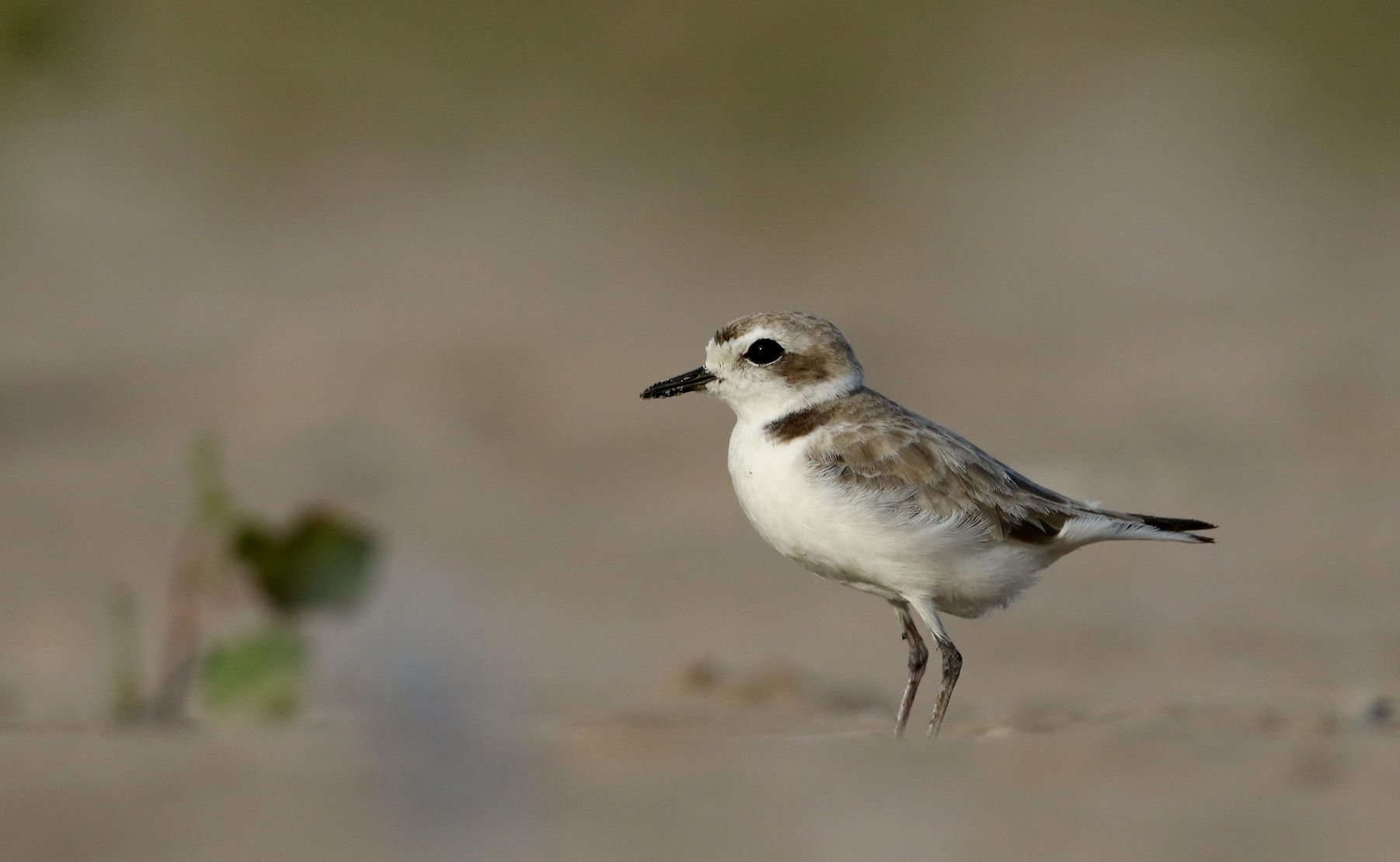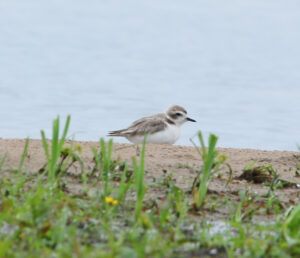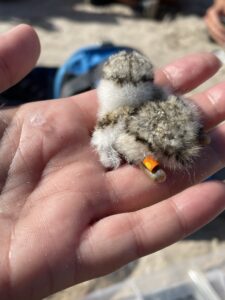
It’s not a standard job title: piping plover technician.
For nearly a year, Sarah Forestiere, a 2018 graduate of Finger Lakes Community College, has monitored two nesting pairs of the federally endangered shorebird at Sandy Island Beach State Park on Lake Ontario, for the state Office of Parks, Recreation and Historic Preservation. Only 60 nesting pairs are known to be scattered throughout the Great Lakes.
She has kept records of the birds’ activity, taught park visitors about piping plovers, and set up snow fence around their nests to protect their eggs and the chicks, which she describes as “cotton balls that weigh the same as two pennies.”
All this made Forestiere qualified to recognize that a visitor to Sandy Island on Sept. 13 was a plover, but not a piping plover.
She checked guides and concluded it was a snowy plover, common to the southern and western U.S. and the Caribbean. She confirmed her find with an amateur birdwatcher, Matt Brown, who encouraged her to post it on the Cornell Lab of Ornithology’s eBird app.

It caused an immediate stir.
“The snowy plover observation was significant for birders and ornithologists as it represented the first record of the species for the state of New York and one of only a few dozen from the northeast and Great Lakes area in general,” said Jay McGowan, multimedia collections specialist at the Cornell Lab.
McGowan works closely with the team that manages eBird and is a member of the New York State Avian Records Committee, the group that maintains the official state list of birds recorded here.

“I didn’t realize how big this was going to blow up,” said Forestiere, who grew up in Watertown, Jefferson County. It is the perfect capstone to her state parks internship, funded through a branch of AmeriCorps, before she finishes her bachelor’s degree in wildlife conservation in December. She has been studying online through Unity College in Maine while working her piping plover technician gig.
What does it mean to find a bird so far from its typical range?
“I have seen several prominent birders refer to this sighting as long overdue for New York state,” said John Van Niel ’83, one of Forestiere’s FLCC professors. “Snowy plovers have shown up in the Great Lakes occasionally. It was just a matter of time before one was found within our borders.

“Many birds wander after the nesting season in what ornithologists call post-breeding dispersal. This could prove to be advantageous as some birds might discover new suitable habitat this way,” he added.
Van Niel is proud of his former student and the mark she has made.
“Sarah was not only in the right place at the right time but knew her birds well enough to realize she was seeing a different species rather than, say, a light-colored individual of an expected species. Sarah’s sighting helped to write a chapter in the natural history of this species,” he said.

Forestiere will say goodbye in November to the piping plovers she has watched over for the last year. She had enjoyed the birds’ habits, for example, the male kicking up sand to make a nest, which the female inspects before settling in. The chicks – the two-penny cotton balls – are precocial, meaning they are running around and hunting for food within a couple days of hatching.
“We’re fortunate to host these rare endangered birds,” she said. “People say, ‘It’s just a little bird, what does it mean to me?’ I tell them most shore birds are indicator species. If that bird is in the area, the ecosystem is very healthy,” she said of the 17-mile dune and wetland habitat along the eastern shore of Lake Ontario.
She said she feels well prepared for what lies beyond graduation, thanks in part to her hands-on experiences at FLCC.
“I have a two-year education from FLCC, but it feels like I was there for a four-year degree with all the field experiences I had. I think black bear management really kind of did for me,” she said, referring to one of Van Niel’s classes. “Working with the DEC (state Department of Environmental Conservation), and going to the bear den. I thought, ‘This is awesome.’”
A photo from the class that shows her holding a black bear cub prompts a little envy from the other park interns she has met. “They say, ‘That’s unreal. I’ve never heard of a black bear management class.”’
Forestiere also appreciates the contacts she has made through her work with the state parks service, the U.S. Fish and Wildlife Service, and other agencies that study and protect wildlife. She hopes to find work as a wildlife technician that will allow her to see other parts of the country.
As for the snowy plover, that story has just begun, too.
“Lone reports such as this are interesting, but the real value comes from numerous individuals all reliably reporting what they find,” Van Niel said. “In that way, patterns may emerge that can tell us if sightings like this are an isolated incident or part of a change in the natural history of a species.”

Editor’s note for the birding community: When Jay McGowan went to Lake Ontario following Sarah Forestiere’s sighting of the snowy plover, he found a 3rd state record but overall rarer-in-the-country common ringed plover in the same area. See details are on his eBird checklist.

